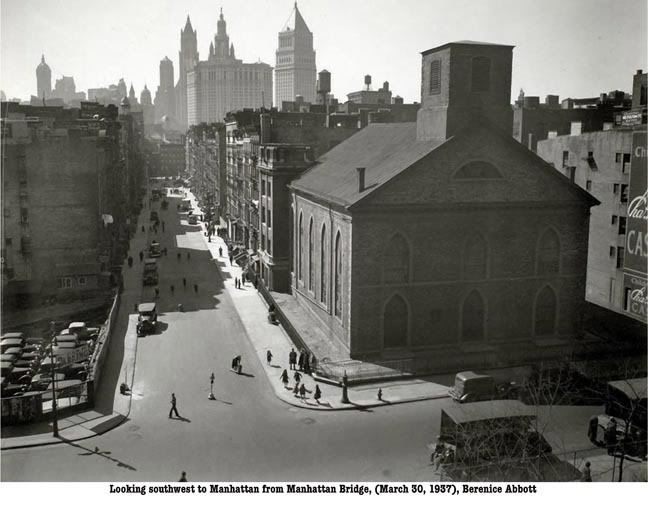
The history of the church was once part of a PS 20 art and technology project back in 2003. The teacher was Rafael Guzman, r.i.p.
The photo description from the Museum of the City of New York exhibition on Berenice Abbott's photos
When the Manhattan and Williamsburg Bridges were built at the turn of the century, their long access ramps cut huge swaths through the tenement neighborhoods lining the East River. These grand entries were meant to inspire further initiatives in urban beautification but instead they still rise incongruously from rundown surrounding streets. The disparity is particularly acute at the Manhattan Bridge, which empties into Chinatown at the congested intersection of Canal Street and the Bowery.
Abbott used the walkway on the entry ramp of the Manhattan Bridge as an ideal vantage point for photographing some of the Lower East Side. In a discarded image, she reworked a composition attempted earlier, looking south toward the Brooklyn Bridge and the Wall Street skyline (Manhattan Bridge, variant image 3). The strong sunlight falling along Cherry Street leads the eye deep into the picture space. On the right rises the broad facade of the innovative low-income housing project Knickerbocker Village (1934), and on the left is the Hearst newspaper plant, currently used by the New York Post.
Moving west along the bridge and turning the camera southwest, Abbott photographed the intersection of Market and Henry Streets. The foreground is dominated by the Church of Sea and Land, originally a Dutch Reform Church which dates to 1817. This view nearly duplicates that of Henry Street, taken from ground level and partway down the block. The church is now the First Chinese Presbyterian Church, and on the site of the parking lot (in the lower left of the photograph) is a 14-story apartment building.


























No comments:
Post a Comment